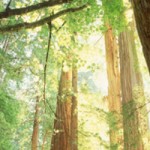January 28, 2014


See how The CA Redwood Company is maintaining a healthy forest habitat, one spotted owl at a time.
Advertorial by SCGH1/28/14
The health of forests is among the top considerations for many homeowners when choosing natural wood products for home improvements such as decks and fences. While some studies have shown that sustainably harvested wood can be more environmentally friendly than man-made composites or plastics, consumers want to make sure that the integrity of our forests will remain intact for centuries to come. Beyond the trees alone, the health of a forest is largely determined by the wildlife species that inhabit them.
For The California Redwood Company (CRC), the health of its redwood forests is not only important for its business, but also a responsibility they take seriously. Recently, both CRC and its parent company, Green Diamond Resource Company, were certified to Forest Stewardship Council (FSC) standards across all of its operations and timberlands in California as evidence of this dedication. Both companies have been certified to Sustainable Forestry Initiative (SFI) standards since 2001.
The North Coast of California offers unique wildlife habitats, which require special attention. In 1990, Green Diamond hired a wildlife biologist to study the impact of timber operations on wildlife in their forests, particularly the Northern Spotted Owl. This scientific research and monitoring program led to the development of effective programs and practices to sustain populations of spotted owls during timber operations. The wildlife and fisheries crew has now grown to a group of 30-40 employees, depending on the season.
In addition, Green Diamond’s timberlands became the first privately owned timberlands in the nation to be awarded a Habitat Conservation Plan (HCP) for the Northern Spotted Owl by the U.S. Fish and Wildlife Service. An HCP is a voluntary forest management plan developed in cooperation with the landowner and numerous governmental agencies.
Green Diamond’s employees use precautionary harvesting technology and methods to reduce the disruption to the environment. The harvests are carefully planned, taking into account a host of factors including:
For decades, Green Diamond’s natural resource professionals have continued to assess and guide forest management and sustainable production, understanding that no one harvesting method is appropriate for all areas and forest types. Through their studies, Green Diamond’s scientists have found that wildlife, like the Northern Spotted Owls, thrive in areas that include a mosaic of habitats across the landscape. Taking this into account, Green Diamond and CRC are conscious of the mixture of tree sizes and ages, stream buffers, and other habitat set-asides needed to maintain a healthy, complex landscape.
Green Diamond and CRC have communicated their long-term commitment to the land, and it is encouraging to see this promise put into practice. We hope that the great work done by Green Diamond’s scientists, registered professional foresters, wildlife biologists, and other experts continue to help evolve the company’s forest management practices, ensuring that its forests remain healthy and productive. And, as forest lovers know, the health and diversity of fish and wildlife populations are inextricably linked to the health of the forests in which they dwell.
By incorporating sound science and sustainable resource management techniques, Green Diamond has taken a leadership role in responsibly managing lands on a landscape scale. That means purchasing redwood lumber from The California Redwood Company is more than beautification of your own backyard – it’s directly supporting the sustainable forestry practices we’d like to see all lumber companies embrace.
For related articles, see:
Environmentally Friendly Lumber and Panel Products
Environmentally Friendly Wood Floors
Environmentally Friendly Decks